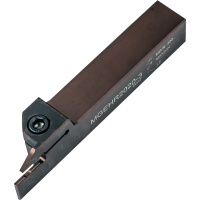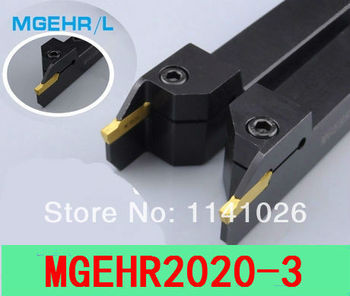CIM Oct-2015, April - 2015, April - 2014 , Oct-2014 Question Papers
CIM Oct - 2015 Question Paper
887
Part A
1. List out any four benefits of CAD.
2. Mention any four CAD software packages.
3. What is scaling?
4. Expand IGES and PHIGS.
5. What is group technology?
6. What are the types of CAPP?
7. Define capacity planning.
8. What is rapid prototyping?
9. Define numerical control.
10. What is adaptive control system?
11. What is the function of transducers?
12. What are the types of feed drives?
13. What is NC part programming?
14. What is meant by tool offset?
15. What is difference between G00 and G01?
16. What is meant by peck drilling?
17. What are the components of FMS?
18. What is virtual machining?
19. Expand ASRS.
20. Define robot.
Part B
21. A. i. Explain various activities of CAD. - 7
ii. Distinguish between boundary representation and constructive solid geometry. - 5
Or
B. i. Explain with a neat sketch about the CIM wheel. - 8
ii. List out the advantages of finite element analysis. - 4
22. A. i. Explain OPITZ classification system. - 8
ii. What are the advantages of CAPP? - 4
Or
B. i. Explain just-in-time manufacturing philosophy. - 6
ii. Explain 3D printing.
23. A. i. Distinguish between NC and CNC. - 4
ii. Explain the construction and working of coordinate measuring machines. - 8
Or
B. i. Explain the construction and working principle of machining centres. - 8
ii. Explain working principle of stepper motor. - 4
24. A. i. With a neat sketch explain NC coordinate system. - 4
ii. Write a sample part programme for producing component using CNC lathe - 8
Or
B. i. Explain types of motion control. - 6
ii. Explain the use of macros with a simple CNC programme. - 6
25. A. With a neat sketch explain various types of FMS layouts. - 12
Or
B. i. Explain working principle of AGV. - 8
ii. What are the robot configurations - 4
CIM April - 2015Question Paper
567
April -2015
Part A
1. What is CAD?
2. What is concatenation?
3. What is the need of graphics standard?
4. What is graphic workstation?
5. Define CAM.
6. List the advantages of CAP.
7. What is capacity planning?
8. What is sequential engineering?
9. What is DNC?
10. List the features of CNC machines.
11. What is the purpose of CMM?
12. What are transducers?
13. Mention the methods of part programming.
14. What is NC dimensioning?
15. What is canned cycle?
16. What is circular interpolation?
17. What is FMS?
18. What is virtual machining?
19. List the benefits of AGV.
20. Mention the methods of robot programming.
Part B
21. A i. Explain the the Shigley's design process.
ii. Explain the 2D transformations with example.
Or
B. i. Explain the solid modelling techniques.
ii. Explain the IGES standard.
22. A. i. What is group technology? Explain the methods of grouping parts into part family.
ii. Write short notes on
1. Manufacturing Resource Planning 2. Shop floor control.
Or
B. i. Explain the product development cycle.
ii. Explain the laser sintering process of RPT. Mention its advantages and disadvantages.
23. A. i. Explain the working principle of CNC system.
ii. Explain the working of ATC.
Or
B. i. Explain the construction and working of CNC machining centre.
ii. What is a feedback device? Explain the principle of rotary transducer.
24. A. i. Explain about the tool materials and tool inserts of CNC machines.
ii. Describe about conversational programming. Explain the concept of tool compensation.
Or
B. i. Write the procedure to create a CNC program. With example explain linear interpolation.
ii. Write a part program to explain the mirroring operation in CNC machining centre.
25. A. i. Explain about the components of FMS.
ii. Explain the FMS layouts.
Or.
B. i. Explain the working principle of of AGV.
ii. Explain the configurations of robot.
%%%%%%%%%%%%%%%%%%%%%%%%%%%%%%%%%%%%%%%%%%%%%%%
CIM April - 2014 Question Paper
234
April -2014
Part A
2. What is CAD?
3. What is graphics standard?
4. What is 3D rotation?
5. List the benefits of CAM.
6. What is GT?
7. What is Master production schedule?
8. What is sequential engineering?
9. Define DNC?
10. Mention the advantages of of CNC machines.
11. What is ATC?
12. What is an encoder?
13. What is conversational programming?
14. What is a datum point?
15. What is macro?
16. Mention the syntax for threading cycle.
17. What is FMS?
18. What is virtual machining?
19. Define robot.
20. What is AGV?
Part B
21. A. i. Explain the activities of CIM wheel. - 6
ii. Explain the guidelines of design for manufacture and assembly. - 6
Or
B. i. Explain the activities of CAD in Shigley's design process. - 6
ii. Explain the 3D rotation and 3D translation. - 6
22. A. i. Explain the generative type CAPP. - 6
ii. Explain the MRP - I. - 6
Or
B. i. Explain the code system. - 4
ii. What is RPT? Explain the stereo lithography method. - 8
23. A. i. Explain the working principle of CNC system. - 6
ii. Explain about the the design considerations of NC machine tools. - 6
Or
B. i.. Explain the working principle of EDM die sinking machine. - 6
ii. Explain about the ATC. - 6
24. A. i. Explain the NC dimensioning methods with example. - 6
ii. Write a part program for thread cutting operation in a CNC lathe. - 6
Or
B. i. Write a part program for pocketing in a CNC milling machine. - 6
ii. Explain about the tool offsets and tool compensation . - 6
25. A. i. Explain about the FMS components. - 6
ii. Explain the intelligent manufacturing system. - 6
Or
B. i. Explain the working principle of AGV. - 6
ii. Explain any two industrial applications of robot. - 6
%%%%%%%%%%%%%%%%%%%%%%%%%%%%%%%%%%%%%%%%%%%%%
887
Oct-2014
Part A1. What is concept of CIM?2. What is graphic workstation?3. What are the techniques of geometric modeling?4. Define graphic standard.5. What are the types of coding structure?6. What is master production schedule?7. Define concurrent engineering?8. List out any two materials used in rapid prototyping.9. What are the components of NC system?10. List out any four advantages of CNC machines.11. State any two requirements of good slide ways.12. What is the function of encoder?13. List out any two formats used in NC part programming.14. What is point to point motion control?15. What are the functions of M02 and M06?16. What is macro?17. What are the benefits of FMS?18. List out any two types of AGV.19. List out any two robotic sensors.20. What is intelligent manufacturing system?
Part B
21. A) i) What are the benefits of CIM? - 4
ii) Explain the implementation of GKS in CAD workstation? - 8
(OR)
B) i) What is transformation? Explain the translation. - 4
ii) Explain constructive solid geometry. - 8
22. A) i) What are the benefits of CAM? - 3
ii) Explain with neat sketch the variant type CAPP? - 9
(OR)
B) i) Explain product development cycle. - 8
ii) Describe enterprises resource planning. - 4
23. A) i) Explain working principle of CNC system. - 6
ii) With neat sketch explain the working of re-circulating ball screw. -6
(OR)
B) i) Explain the working principle of wire EDM machine. - 6
ii) Explain the working of DC servomotor. - 6
24. A) i) Explain APT programming . - 8
ii) Explain the peck drilling cycle. - 4
(OR)
B) i) Explain machine zero and work zero. - 4
ii) Write a sample part-programme for milling. -8
25. A) i) Explain flexible manufacturing cell. - 6
ii) Describe basic robot motion. - 6
(OR)
B) i) What are the benefits of AGV? - 4
ii) Explain industrial applications of robot. - 8








 Fig. 7.5.2 Types of Joints
Fig. 7.5.2 Types of Joints 

